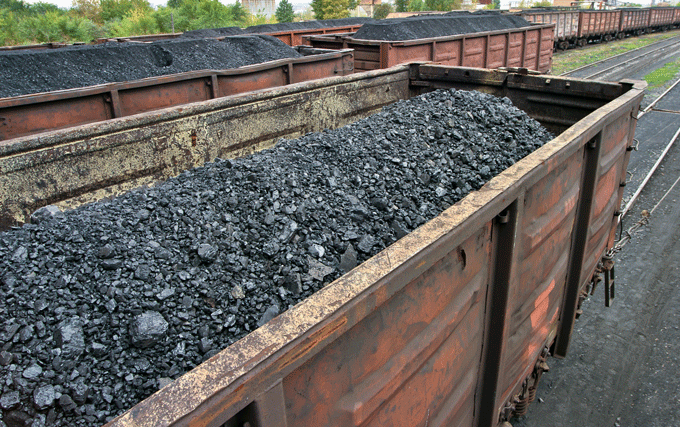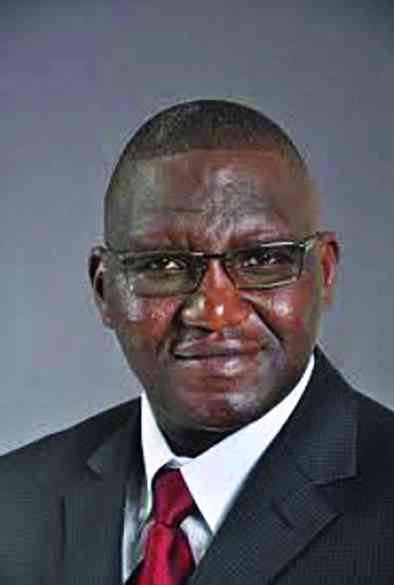
BY TATIRA ZWINOIRA
THE Zimbabwe Energy Regulatory Authority (Zera) says Zimbabwe has coal reserves of 12 billion metric tonnes, proving that the country has huge potential for thermal-powered electricity.
According to the United States real time statistics website, Worldometer, Zimbabwe’s total coal reserves ranks 38th in the world.
“Proven coal resources of over 12 billion metric tonnes are situated mainly in the northern and north-western parts of the country,” Zera says on its website.
High coal dependency
In October 2019, Mines and Mining Development minister Winston Chitando noted that Zimbabwe traditionally produced about three million tonnes of coal per annum and that the produce was expected to leap to 15 million tonnes.
“Zimbabwe’s coal is generally of good quality, with calorific values ranging from 20 to 32 megajoules (MJ)/Kg (mega joules/kilogramme),” Zera said.
“There is still room for more power generation capacity to be enhanced by local and foreign investor’s participation.”
- Chamisa under fire over US$120K donation
- Mavhunga puts DeMbare into Chibuku quarterfinals
- Pension funds bet on Cabora Bassa oilfields
- Councils defy govt fire tender directive
Keep Reading
As a result of Zimbabwe’s coal reserves, Worldometer said the country had about 163 years of coal left, proving huge electricity generation potential.
“Zimbabwe has proven reserves equivalent to 163,3 times its annual consumption. This means it has about 163 years of coal left (at current consumption levels and excluding unproven reserves),” Worldometer noted.
In terms of power generation, this means that Zimbabwe has an energy potential to produce between 413 trillion to nearly 662 trillion MJ of power.
Based on this, Zimbabwe’s coal on its own can make the country power self-sufficient for over 100 years.
Yet, currently, the Hwange Thermal Station is producing just 402 megawatts (MW) below its potential of 920MW.
Hwange, located in Matabeleland North province, northwest of Zimbabwe is said to have huge coal deposits.
Under the Zimbabwe Power Company (ZPC) website, there are only two coal power projects listed.
The creation of units seven and eight at the Hwange Power Station is supposed to add 600MW to the plant, at a cost of US$1,5 billion.
The financiers of the project are China’s Export-Import Bank and the African Export Import Bank loaned US$998 million and US$76 million, respectively, and a reported US$40 million came from the China-owned Standard Bank of South Africa.
The rest of the costs are being covered by the ZPC and Sinohydro, the latter being a Chinese State-owned hydropower engineering and construction company.
Secondly, the ZPC lists the Hwange Life Extension project which is supposed to extend the existing six units at the plant by another 25 years, since they are between 34 and 38 years old.
The government secured a US$310 million loan from India’s Export and Import Bank to extend the existing units.
So, what is stopping Zimbabwe from realising the full potential of coal in terms of power generation?
Investor apathy and the fight against climate change.
Investor apathy
Investor apathy into mining has only increased over the years due to a number of factors that Zimbabwe Coalition on Debt and Development (Zimcodd) articulates.
“The mining sector requires a lot of capital, a challenge that can only be resolved by the ease with which a company can access global capital markets,” Zimcodd said in its weekly economic review for the week beginning February 15, 2022.
“Zimbabwe is at a disadvantage in accessing global capital markets due to its record of failure to honour financial obligations when they fall due, policy inconsistency, institutionalised corruption, structural rigidities and fragile politics among other factors.”
Due to these reasons, the exploration and extraction of coal is challenging as the venture lacks sufficient support.
Another challenge, mentioned by Zimcodd is lack of exploration and geological survey data by the government, making it hard for investors to plan their investments.
This is evidenced in the available data of coal being mostly estimated, based on the availability of the mineral and not actual figures.
“The government should invest heavily in mineral exploration and geological surveys to establish the quantum of all minerals as this helps in determining the true value of a mine,” Zimcodd said.
The green push
Another investor challenge is the lack of environmental impact assessment (EIA) reports.
With the push towards more climate change initiatives, investors are being forced to make sure that areas where they are investing do not impede on the environment.
This is part of a larger push by the United Nations to have companies take up sustainability agendas in their business.
To that end, climate change is considered “coal’s most serious, long-term, global impact”.
In Zimbabwe, in particular, the Environment, Climate, Tourism and Hospitality minister Mangaliso Ndhlovu has to issue a provisional licence before mining can start.
When he has done that, there are several compliance issues that need to be done before mining starts.
One of those issues is to ensure that a miner complies with ministry requirements in terms of the preservation of the environment, ensuring it is left intact.
However, locally, it was recently revealed that there aren’t a lot of these EIA reports.
“I wanted to ask for an explanation with regards to the environmental impact assessment. Are they aware that there are people who are operating or mining without compliance, such as mining that is happening in some areas?” Warren Park MP Shakespear Hamauswa asked during a Parliament sitting last week.
“I am kindly asking the minister (Justice, Legal and Parliamentary Affairs Ziyambi Ziyambi) to explain to the House the issue of EIA. Is the ministry aware that there are other places where mining is taking place while residents of those places were not consulted in terms of compiling the EIA?”
Thus, without these EIA reports, foreign investors cannot proceed to invest in minerals such as coal as it could come with negative backlash to themselves, company or brand, negatively affecting their bottom line.
ZPC did not respond to an email around coal investments sent at least two weeks back.
Climate change fight
In July 2021, it was reported by the United States-based newspaper, Bloomberg, that the Industrial and Commercial Bank of China (ICBC) would abandon a planned 2,8GW (2 800 megawatts) Sengwa Coal Plant Project worth US$3 billion.
This was after the Go Clean ICBC, a global network of organisations opposed to ICBC’s coal finance formed in January 2021 to get the bank to switch its investments to clean energy like solar and wind power.
The local resource advocacy group, Centre for Natural Resource Governance (CNRG), working under Go Clean ICBC, pushed for the abandonment of the Sengwa Coal Plant Project, which would be located in the northern-western part of Zimbabwe.
The reason given for wanting the abandonment is due to it having immense impacts on the ecological, social, economic and political environment of Sengwa and other affected areas.
“An independent report by CNRG on the impact of coal mining in Hwange showed that, coal mining by Hwange Colliery, Makomo, Chilota, WMK and Coalbricks Mines has resulted in substantial and permanent damages to the landform,” a 2020 CNRG report on coal investments read.
“The report also showed that the burning of coal by ZPC emits pollutants such as matter (PM) and ground-level ozone — the key ingredients of smog — along with nitrogen oxides, sulphur oxides, volatile organic compounds and carbon monoxide. As such the air in Hwange is heavily polluted and this has serious health impacts on the community.”
According to the US-based science advocacy group, Union of Concerned Scientists, chemically, coal is mostly carbon, which, when burned, reacts with oxygen in the air to produce carbon dioxide, a heat-trapping gas.
When released into the atmosphere, carbon dioxide works like a blanket, warming the earth above normal limits.
Consequences of global warming include drought, sea level rise, flooding, extreme weather, and species loss.
CNRG also raised the effects coal has on health.
“Studies have shown that living near coal combustion power plants is associated with fatal health risks — in the form of lung, laryngeal and bladder cancer. Respiratory complaints, increases in non-melanoma skin cancers, stillbirths and miscarriages are also common,” the CNRG report read.
In December 2021, CNRG said the government was ignoring its report on the effects of underground coal fires in Hwange that had claimed lives and left some people with permanent physical and psychological scars.
A month earlier, CNRG found that some of the victims, who are now adults, were injured while young and had their future ruined by the permanent injuries.
It was also established that lengthy periods of time were spent in hospitals in unending excruciating pain that had become a permanent experience in their lives, largely due to inadequate therapy they received.
“At the beginning when these investments came, they came on the shoulders of politicians so there is a lot of propaganda about job creation and infrastructural development. But, the reality of the matter is that there is no development taking place in Hwange (as an example),” CNRG director Farai Maguwu told NewsDay.
“The infrastructure that was built by the colliery is decaying and the new entrants (mining investors) are also not contributing much in terms of mining development. And the quality of the jobs that are being offered are very poor-quality mining jobs in terms of remuneration of workers.
“So, I would think that coal mining is making the community poorer and more unsafe than if mining is not taking place at all.”
Maguwu said the ICBC is yet to leave the Sengwa project.
Conclusion
Coal mining is being phased globally.
If the Zanu PF government continues with coal mining, it risks being alienated by foreign investors.
The Zimbabwe Energy Council (Zec) has previously stated that the country has a solar potential of 16 to 20 MJ/m2/day, which is vastly unexploited and can generate up to 600MW.
If the potential of geothermal (50MW) is added along with biomass (1 000MW), small hydro (120MW), and wind (100MW), to solar energy generation, the country has total renewable energy potential of 1 872MW, according to Zec.
This is more than enough to cater for Zimbabwe’s power deficit of between 1 000MW and 1 600MW, Zec has previously stated.
Yet, despite the Zimbabwean government launching a renewable energy policy in March 2020, little has been done to promote renewable energy generation which was confirmed in a recent interview with a local independent power producer (IPP).
“Do you see much evidence of additional IPP activity in the country?” Nyangani Renewable Energy (Pvt) Ltd managing director Ian Mckersie recently asked our sister paper, The Standard, in a recent interview.
The Zimbabwean government must move with the times and explore cleaner alternatives to coal mining if it wishes to be part of the international community.
- This article first appeared in the Weekly Digest, an AMH digital publication
- Follow Tatira on Twitter @Tati_tatira










